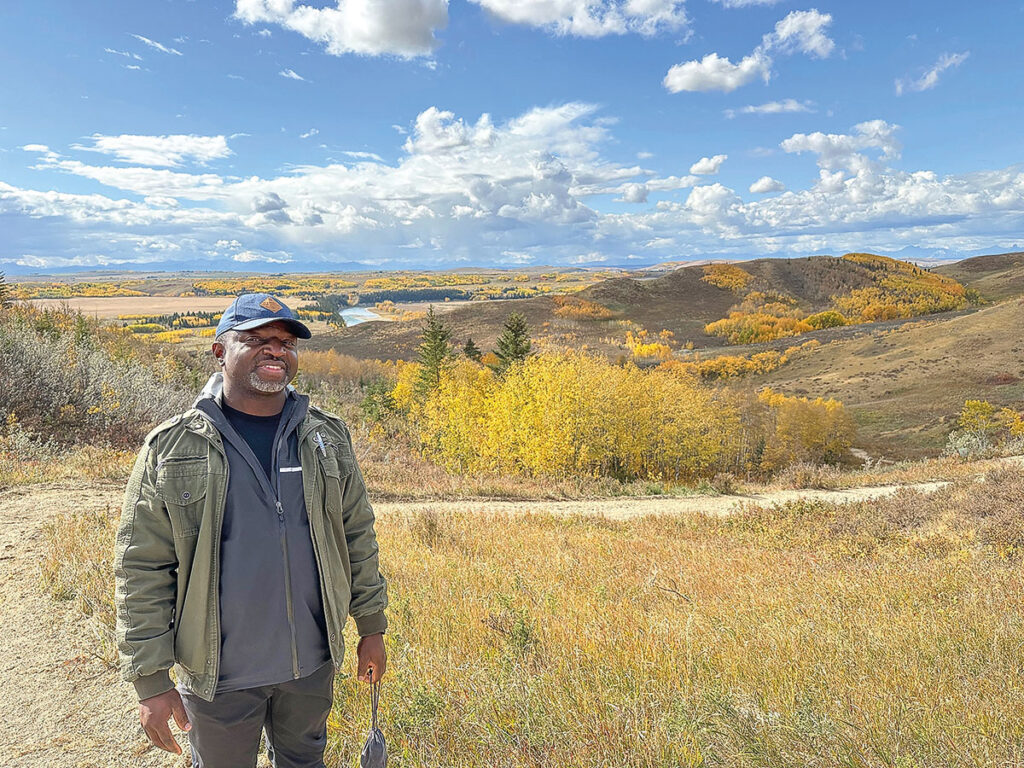© Richard Kakkianiun, CBMN participant
Conservation and wildlife management
The power of traditional knowledge and technology in Nunavut
The Canadian territory of Nunavut is home to just over 36,000 Inuit. For centuries, Inuit have harvested Arctic char, caribou, beluga whales, ring seals and other species to support their economic, cultural and nutritional needs. But the numbers and behaviours of these species are changing because of climate warming and other environmental stressors.
In 2012, the Nunavut Wildlife Management Board (NWMB) started the Community-Based Monitoring Network (CBMN). The network collaborates with Inuit hunters to record their travel routes, wildlife observations and harvests in order to gather the data needed to address concerns related to wildlife management, conservation and harvesting rights.
Now, the network is tapping into the power of the SMART conservation area management platform to enable participating Inuit hunters to collect data about Arctic species. Compatible with almost any mobile device, the SMART app allows the 300 Inuit hunters who participate in the network to work with conservationists to collect, visualize, store, analyze, report and act on a wide range of data. The Circle spoke to NWMB’s director of wildlife, DENIS ETIENDEM NDELOH, about the benefits of the technology.

Denis Etiendem Ndeloh
Why did you start the Community-Based Monitoring Network?
In 2012, the Nunavut Wildlife Management Board decided that in order to be comprehensive in its knowledge-gathering and support decision-making, it needed to capture not only information coming from Indigenous Knowledge and scientific research, but from contemporary Inuit harvesting practices. What are Inuit seeing on the land? What are they taking from the land? And how does that change across the territory? In addition, the board wanted to be able to see the changes that are happening over time through the lens of those who spend the whole year harvesting or living on the land.
How did you plan to use this knowledge?
The number one priority was to support more effective wildlife management decisions. The board is the main instrument of wildlife management and is responsible for making decisions related to wildlife harvesting by Inuit and others in Nunavut. The board needed this information to make its decisions, but also to support Inuit knowledge transfer and the continuation of Inuit harvesting practices. If you build a comprehensive database in a community where harvesters have been documenting their harvest—what they’re taking from the land, where they’re taking it, how far they travel, what equipment they used—then the next generation will have access to this information.
© Kyle Ritchie, NWMB
How do Inuit hunters use the SMART app?
They download the SMART app on their phones. If they don’t have a phone, we give them a rugged handheld device with the app preloaded. Then when they wake up in the morning and want to go harvest a caribou or check their nets, they turn on the app and answer a one-minute harvesting questionnaire. Then they just put their phone or device in their pocket, and it tracks them.
That’s where we’re getting really important information about travel routes. As the climate is changing, it’s becoming very important to track travel routes—and it will be even more important in the future. Because the conditions are changing rapidly, making certain areas less safe to hunt in. These data will also tell us how far people travel in order to access wildlife. That will help us track the cost of harvesting and whether it’s increasing or decreasing over time.
We also encourage hunters to record their observations of wildlife habits. For example, if they see polar bear tracks, they can take out their phone and take a picture. Then they add what information they can, like how fresh the tracks are. At the end of the trip, they can click on a button to upload the information to the database. That creates a record of a polar bear on the land.
How has the SMART program helped you collect the data you’re looking for?
It has improved our monitoring efforts because we’ve been able to streamline the process for harvesters. The interface is more user-friendly. For example, the icons for all the species were inspired by Inuit artists, and the communities themselves chose them. We also have an open communication line right up to the developers so we can fix issues that come up or make additions to the software. Those behind SMART really adapted their data model to accommodate us, and we continue to work together to fine-tune maps and create new reports. Our liaison officers in the community can generate a report just by clicking a few buttons, then share it with the harvesters to verify the data (or with the community), as needed.
© Okatsiak Romeo, CBMN participant
How does this technology complement what traditional knowledge can tell us?
This technology serves a very important purpose, but it doesn’t replace traditional ways of knowing. It can also be used to support oral arguments that are based on Inuit knowledge. Community-based monitoring data are not more important than Indigenous Knowledge, but supplement it. The survival of the Inuit depends on their ability to continue practicing their culture—which is linked to harvesting. So, any program that supports harvesting supports the Inuit.
The data also support conservation efforts and environmental impact assessments. The information helps researchers identify critical habitats and migration corridors that need protection and can be used to develop guidelines and regulations to minimize the impact of human activities on whale populations.
By WWF Global Arctic Programme